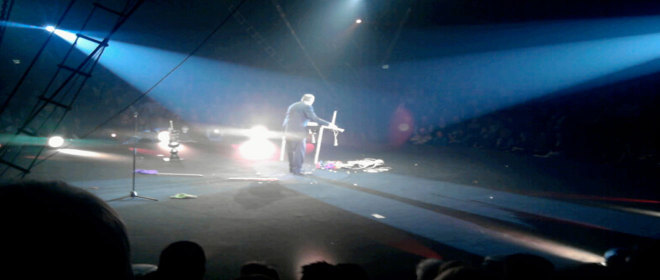
Winifred Gallagher, author of Rapt, a book which discusses the role of attention in the brain, describes two different kinds of attention.
The first, bottom-up attention, describes the fact that our brain tends to focus attention on those stimuli from the environment that seem to “catch” our attention. The term “bottom-up” refers to the fact that the sensory parts of your brain are focusing on those environmental inputs and stimuli. That is, your brain tends to focus on those things from the environment that grasp your attention. For example, if you are leisurely taking a walk in the park and a squirrel darts out in front of you, your brain naturally pays attention to that contrast in the environment. Your brain wasn’t particularly focused on any one thing, so the contrast of the squirrel drew your attention.
The term top-down attention is used to describe the process in the brain where we make a conscious choice to focus on something. This is sometimes referred to as goal-oriented attention. In the case of the walk in the park, if you were asked to focus on something specific, a pair of people walking towards you for example, you may have missed the squirrel darting out in front of you. The brain has an amazing capacity to focus on certain stimuli while tuning out others. Researcher Steve Yantis from Johns Hopkins University reminds us that, “Your life is a sum of what you pay attention to.”
Magicians know all about top-down attention. When they perform illusions, they create an atmosphere where they tell (overtly or covertly) their audience exactly where to look. While the brain is focused (using top-down attention), the magician can rely on the fact that your brain will tune out other stimuli and ignore sleight of hand or other movements that may give away the secret to the illusion.
So, how can this information be transferred into the classroom? First, teach students about the role of attention in the brain. Teach them about top-down and bottom-up attention thus helping to demystify the process of attention. Second, use overt statements and tell your students exactly what to pay attention to. Go beyond merely stating the objective and tell your students which examples, content, or facts are particularly important to pay attention to. In addition, help students create and track their own goals for learning.
Top-down, goal-oriented attention seems to be particularly powerful when the goals are self-created.




Bryan Harris
For those of you interested in the role of attention in the brain, consider this question, “What can self-driving cars teach us about attention?” A lot in turns out and an Associated Press reporter named Joan Lowy addressed this question in her article titled Plans for self-driving cars have pitfall: human brain. She offers an interesting take on the topic.
Read more here: http://bigstory.ap.org/article/78a716f8c4474a36bf97a33e4c207b7b/plans-self-driving-cars-have-pitfall-human-brain